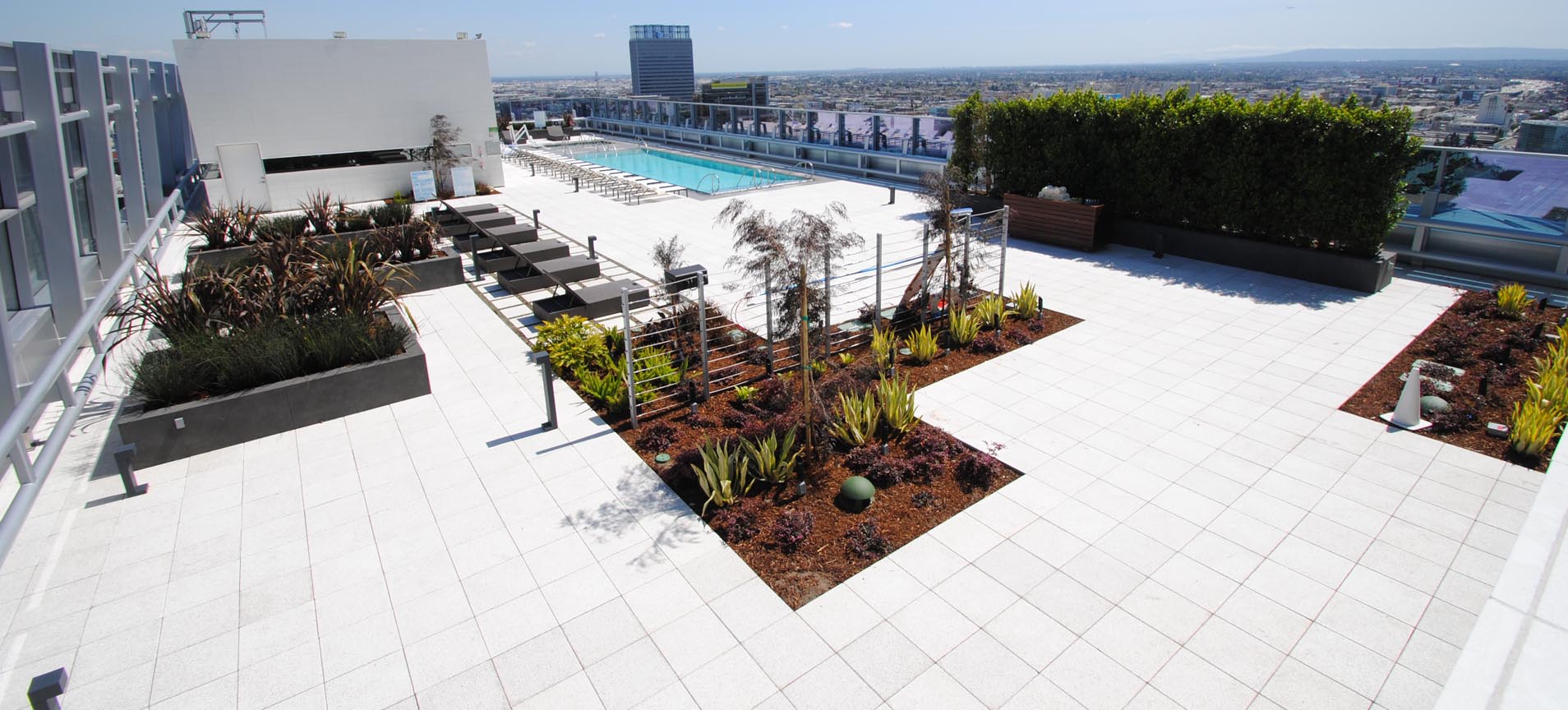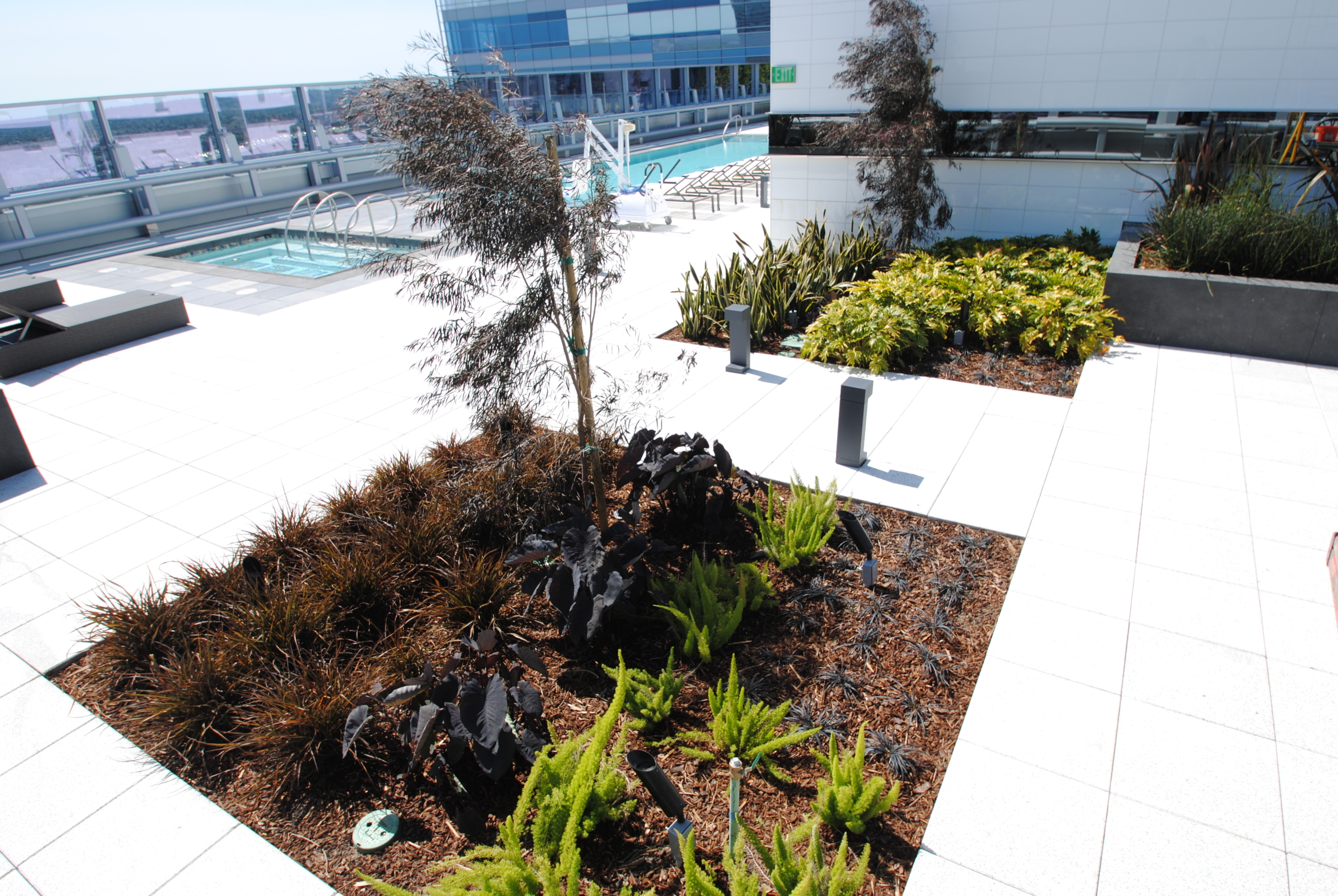Achieving LEED Credits with Tile Tech’s Elevated Roof System
When you’re contemplating an elevated roof for your client, it’s worth considering sustainable upgrades that could push you toward LEED certification. It’s a component of a building that offers various avenues for LEED credit categories, including energy and atmosphere, water efficiency, and materials and resources.
Whether platinum, gold, or silver, Tile Tech offers solutions for enhancing your LEED goals. For example, a modular green roof can contribute to credits such as stormwater management and promoting habitat and biodiversity. Additionally, rooftop decks with a high solar reflectance index (SRI) value can earn credits for reducing the building’s heat island effect, consequently leading to energy usage reduction credits.
The specific requirements and eligibility criteria for earning these points may vary depending on the version of the LEED rating system being utilized (e.g., LEED v4, LEED v4.1). It’s essential for project teams to carefully review the credit requirements and ensure that their roof design and implementation align with the specified criteria to maximize point opportunities.
Urban Heat Island Mitigation

Cool roofs are engineered to absorb less heat and reflect more sunlight compared to standard roofs. Typically constructed with highly reflective paint, sheet covering, or tiles, cool roofs offer numerous benefits:
- Decreased energy bills by reducing the need for air conditioning
- Prolonged service life of the roof
- Lowered local air temperatures, mitigating the heat island effect
- Prevention of power outages by reducing peak electricity demand
- Reduction in power plant emissions like carbon dioxide and sulfur dioxide
SRI values typically range from 0 to 100, with higher values indicating better solar reflectance and a cooler surface. A value of 81 indicates extremely high solar reflectance and emissivity, meaning the material can effectively reflect most of the sun’s energy and emit absorbed heat efficiently. This leads to significantly reduced heat absorption and lower surface temperatures, which is highly desirable for various applications, especially in hot climates.
Tile Tech’s Porcelain Pavers in Terrazzo Cool White have a Solar Reflectance Index (SRI) value of 84, while Quartzite Crystal White, with a value of 81 are two examples considered excellent. Either would contribute significantly to energy efficiency, comfort, and mitigation of the urban heat island effect.
Tile Tech Porcelain Paver SRI Value LEED Credit R Avg EM Avg
Terrazzo Cool White 84 Passed 0,682 0,8920
Quartzite Crystal White 81 Passed 0,661 0,910
Potential credit:
LEED v4.1 Building Design and Construction
Heat island reduction | Sustainable Sites | Possible 2 Points
Intent: To minimize effects on microclimates and human and wildlife habitats by reducing heat islands. The eligibility for reducing the heat island effect credit depends on the type of roof. For existing buildings under LEED v4, low-sloped roofs must have an initial SRI of 82 or a three-year aged SRI of 64, while steep-sloped roofs require an initial SRI of 39 or a three-year aged SRI of 32.
Vegetated/Green Roofs

Green roofs offer an excellent opportunity to earn LEED credits while providing additional benefits for occupants and the environment. They contribute to reducing the heat island effect, promoting biodiversity, and managing stormwater. Tile Tech’s Plant-Tray™ system, otherwise known as modular living roof or green roof system, is an engineered system used in conjunction with our adjustable pedestals on top of roof decks, plaza decks, and terraces. Additionally, they can integrate seamlessly with our elevated paver and wood deck tiles products resulting in a stunning and versatile GREEN rooftop deck.
A green roof not only enhances the building’s sustainability but also promotes occupant well-being by providing a usable space connected to the environment. Note that structural engineer verification is crucial to determine if your roof can support a green roof retrofit, especially if occupants will be utilizing it.
Potential credits:
LEED v4.1 Building Design and Construction
Sustainable Sites (SS) – Multiple Benefits | SS Credit: Protect or Restore Habitat | Point(s): 1-2
Intent: Use vegetated roofs with native or adapted plants to restore 15-25% of total site area to provide habitat.
SS Credit: Open Space | Point(s): 1
Intent: Use vegetated roofs to achieve a minimum of 25% outdoor vegetated space that is physically accessible.
SS Credit: Rainwater Management | Point(s): 1-3
Intent: Use vegetated roofs, alone or in combination with other Low Impact Development or Green Infrastructure tools, to reduce site runoff and improve water quality.
Credit Now and in the Future
Tile Tech’s array of elevated deck products not only contributes to current LEED certification endeavors but also offers long-term benefits such as energy efficiency and cost-effectiveness. Embracing sustainable practices not only aligns with environmental stewardship but also creates healthier and more comfortable spaces for occupants. At Tile Tech, we’re committed to providing innovative solutions that elevate both your roof and your sustainability efforts. Questions about our products? Give us a call today at 888-380-5575 or fill out our online contact form. We’re happy to provide a free project quote, catalog, or product sample at your request.



